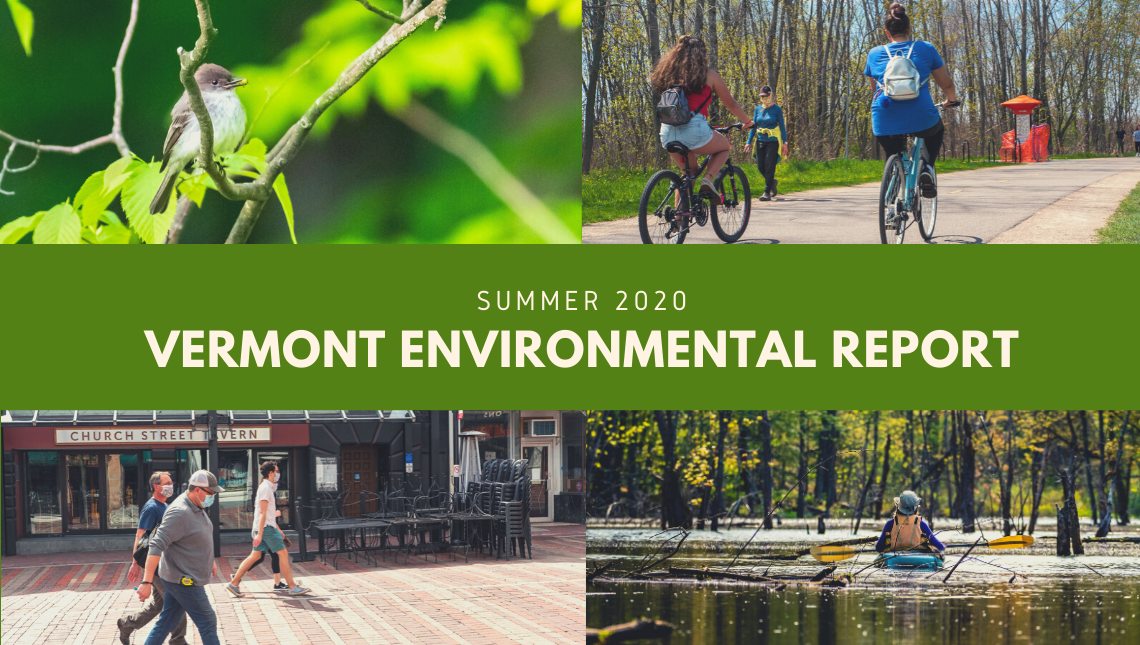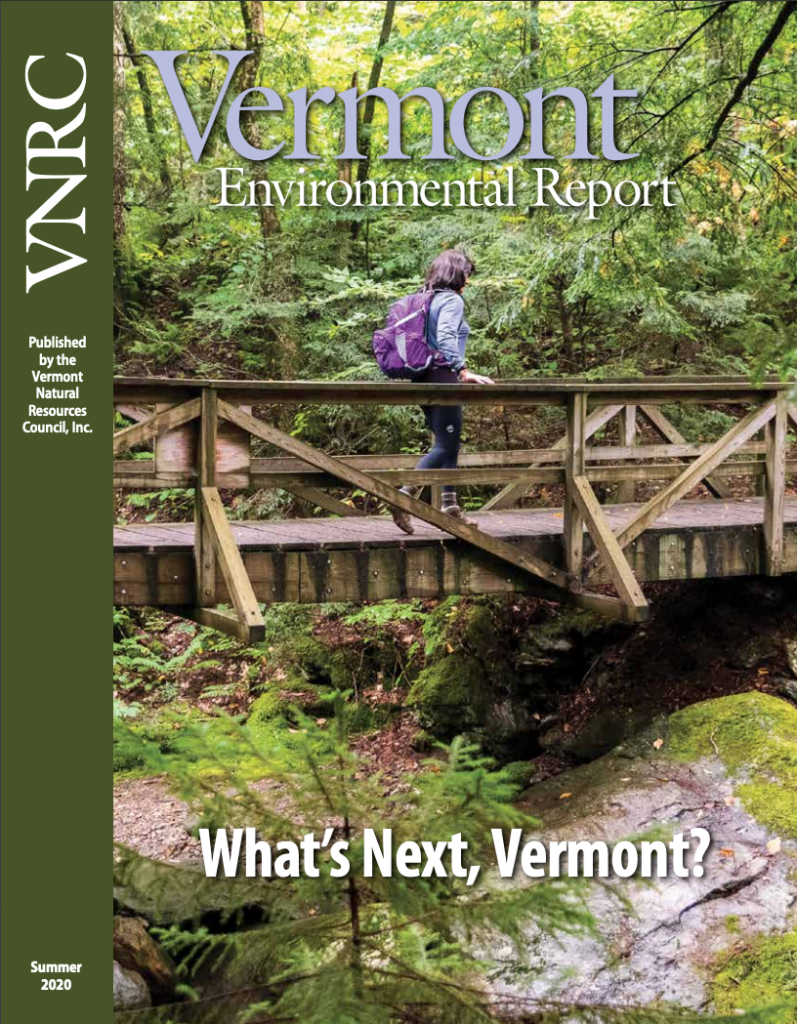Our 2020 summer issue of the Vermont Environmental Report is on its way to members’ mailboxes! In the meantime, we can’t wait to share it with you. Click here to view the digital version. Read on below for an introduction to the issue and a note from our Executive Director, Brian Shupe. We’ll be publishing select stories online to make them easy to share. Thanks for reading.
Introduction: What’s Next for Vermont?
Over the past several months, the COVID-19 pandemic has brought unprecedented challenges to Vermont and to the people who live here. Many of us know someone who has fallen ill or died. We continue to watch in horror as people with lower incomes and people of color are disproportionately affected by the virus and the economic fallout that has accompanied it.
We know that this is not the only global crisis we will face in our lifetime. Climate change is sure to bring — among other things — rising sea levels, harsher and deadlier storms, and the disruption of water supplies. It, too, will be a public health crisis. Luckily for us, Vermont is and can continue to serve as a safe haven. We have an abundance of fresh water, increasingly temperate weather, healthy and productive forests, and high quality agricultural land.
Our ample access to open spaces and natural areas is one of the ways Vermonters have coped with the challenges of sheltering in place. We are also blessed by the human scale of our communities and the institutions that serve them. Our strong ties to our neighbors have allowed Vermonters to look after and care for each other in this time of sacrifice and need. Our strength resides in our communities.
In this issue of the Vermont Environmental Report, we report on ways Vermont can move on from COVID-19 to address ongoing environmental and human challenges. We explore how rebuilding our economy comes with the silver lining of prioritizing a green, resilient recovery, and how in-migration to Vermont during the pandemic can teach us how to best accommodate climate migrants in future years.
We write about promoting equity in conservation work, cultivating interdependence, protecting biodiversity, and more. We are thankful to the many partners and experts who contributed their voices, which may not entirely reflect VNRC’s position on all issues but are important to a broad perspective on Vermont’s future.
We hope that when you’re reading these essays, you’ll think about how many of the institutions we rely on can be re-imagined and restructured to serve everyone living in this state, from how we vote to how we get around our cities and towns. And that you’ll reflect on how to truly support communities in Vermont (and nationwide) who lack the resources to fulfill their full potential.
A note from our Executive Director, Brian Shupe

As the pandemic continues, I have told many colleagues and friends that I am grateful to be weathering the crisis in Vermont, where easy access to wide open spaces, clean lakes and rivers, and supportive, tight knit communities have made these months of social distancing easier.
As grateful as I am to be hunkered down in this great state, it’s important to recognize that not everyone enjoys the same bearable experience. Black people and other people of color are bearing the brunt of the COVID-19 crisis, due in part to disproportionate exposure to pollution, while facing another, centuries-old, pandemic: institutionalized harassment and violence.
VNRC’s commitment to clean air and water; green, affordable energy; accessible open spaces; and sustainable communities reflects our desire for all people to be healthy and safe. But not everyone can be healthy and safe if we do not confront the realities faced by people of color in Vermont and nationwide. That is why we are in solidarity with the many individuals and organizations calling for justice, accountability, and an end to racist violence, and are committed to understanding how our work can help achieve those goals.
I encourage you to consider supporting organizations that are working to dismantle systemic racism in Vermont, such as the Vermont Racial Justice Alliance, Black Lives Matter of Greater Burlington, and the Rutland Area NAACP. It can be hard to be optimistic in times like these, but it is more important than ever to imagine a better tomorrow, for the people who live here and for the natural environment we all call home. This issue of the Vermont Environmental Report explores ways we can prepare for an uncertain future, drawing on the diverse perspectives of a
variety of experts in green energy, planning, farming, education, and much more.
Thank you for your support during these challenging times, and stay well.





